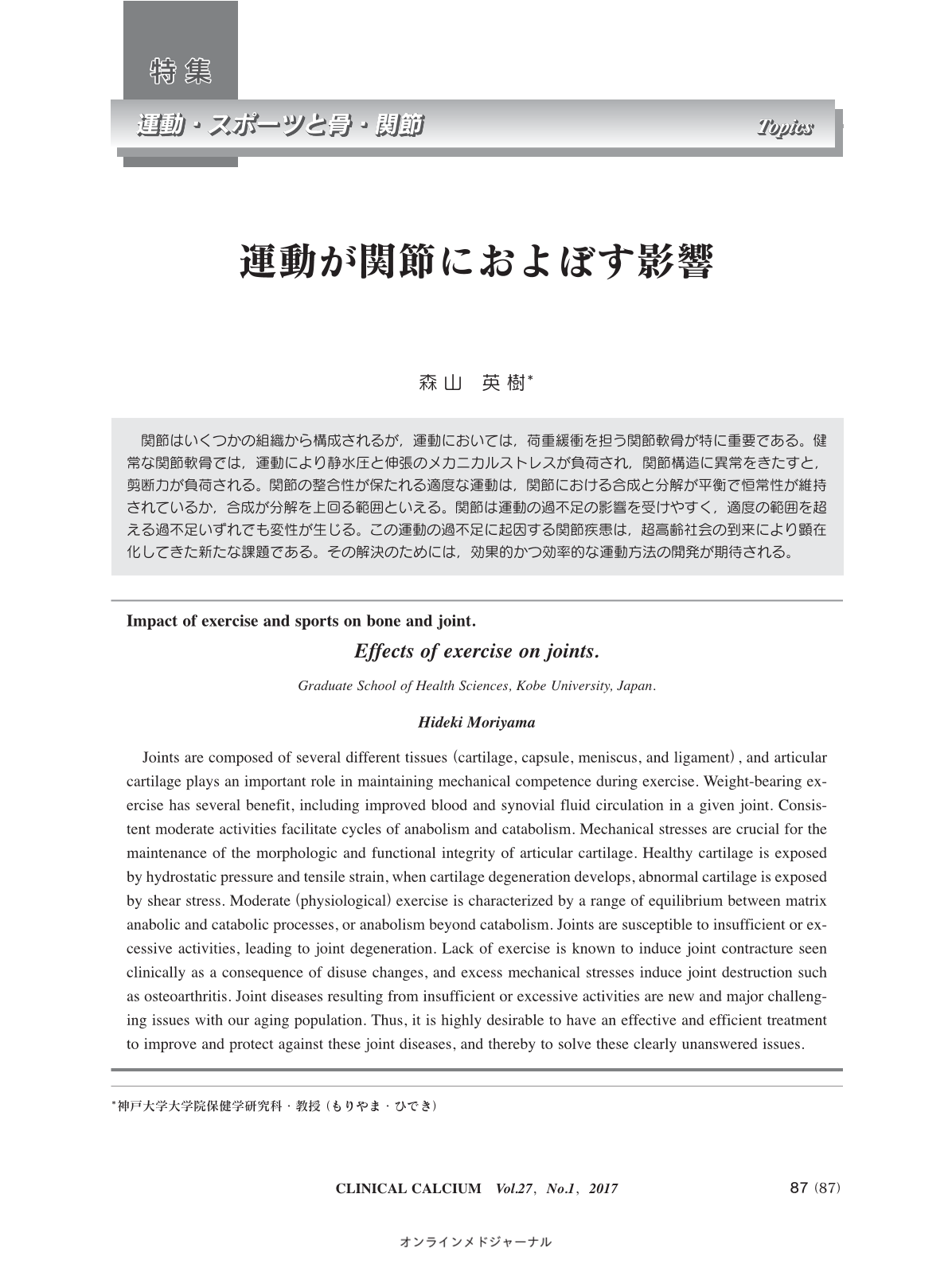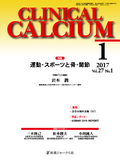Japanese
English
- 有料閲覧
- Abstract 文献概要
- 1ページ目 Look Inside
- 参考文献 Reference
関節はいくつかの組織から構成されるが,運動においては,荷重緩衝を担う関節軟骨が特に重要である。健常な関節軟骨では,運動により静水圧と伸張のメカニカルストレスが負荷され,関節構造に異常をきたすと,剪断力が負荷される。関節の整合性が保たれる適度な運動は,関節における合成と分解が平衡で恒常性が維持されているか,合成が分解を上回る範囲といえる。関節は運動の過不足の影響を受けやすく,適度の範囲を超える過不足いずれでも変性が生じる。この運動の過不足に起因する関節疾患は,超高齢社会の到来により顕在化してきた新たな課題である。その解決のためには,効果的かつ効率的な運動方法の開発が期待される。
Joints are composed of several different tissues(cartilage, capsule, meniscus, and ligament), and articular cartilage plays an important role in maintaining mechanical competence during exercise. Weight-bearing exercise has several benefit, including improved blood and synovial fluid circulation in a given joint. Consistent moderate activities facilitate cycles of anabolism and catabolism. Mechanical stresses are crucial for the maintenance of the morphologic and functional integrity of articular cartilage. Healthy cartilage is exposed by hydrostatic pressure and tensile strain, when cartilage degeneration develops, abnormal cartilage is exposed by shear stress. Moderate(physiological)exercise is characterized by a range of equilibrium between matrix anabolic and catabolic processes, or anabolism beyond catabolism. Joints are susceptible to insufficient or excessive activities, leading to joint degeneration. Lack of exercise is known to induce joint contracture seen clinically as a consequence of disuse changes, and excess mechanical stresses induce joint destruction such as osteoarthritis. Joint diseases resulting from insufficient or excessive activities are new and major challenging issues with our aging population. Thus, it is highly desirable to have an effective and efficient treatment to improve and protect against these joint diseases, and thereby to solve these clearly unanswered issues.



